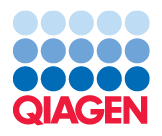Chromatin Accessibility and Expression Analysis from Matrix
The workflow Chromatin Accessibility and Expression Analysis from Matrix takes a pair of an Expression Matrix (- a normalized Expression Matrix (
 ) / (
) / ( );
);
- a Dimensionality Reduction Plot (
 ) associated with the automated clusters, predicted cell types and additional cell annotations;
) associated with the automated clusters, predicted cell types and additional cell annotations;
- a Heat Map (
 ), a Dot Plot (
), a Dot Plot ( ), and a Violin Plot (
), and a Violin Plot ( ) with the predicted cell types as cell groups;
) with the predicted cell types as cell groups;
- a Cell Abundance Heat Map (
 ) with the automated clusters and predicted cell types as cell groups;
) with the automated clusters and predicted cell types as cell groups;
The workflow can be found in the Template Workflows section here:
Single Cell Workflows (![]() ) | From Imported Data (
) | From Imported Data (![]() ) | Chromatin Accessibility and Expression Analysis from Matrix (
) | Chromatin Accessibility and Expression Analysis from Matrix (![]() )
)
If you are connected to a CLC Server via your Workbench, you will be asked where you would like to run the analysis. We recommend that you run the analysis on a CLC Server when possible.
Choose either one or more Expression Matrix (![]() ) / (
) / (![]() ) and Peak Count Matrix (
) and Peak Count Matrix (![]() ) or Select files for import and select the formats that are compatible with the selected inputs.
Read more about import options in Importing data.
) or Select files for import and select the formats that are compatible with the selected inputs.
Read more about import options in Importing data.
The workflow offers a number of options described below. Note that not all parameters can be configured. Open parameters indicate places where customization may be necessary for different samples, but default settings are suitable in most cases.
The workflow can be run using Single Cell hg38 (Ensembl) or Single Cell Mouse (Ensembl) reference data sets (see The Reference Data Manager).
|
Note: Reference data elements cannot be configured during workflow execution. If other elements than those provided in the default reference data sets are needed, a custom reference data set can be used, see
http://resources.qiagenbioinformatics.com/manuals/clcgenomicsworkbench/current/index.php?manual=Custom_Sets.html.
When creating custom reference data sets, the chosen gene track needs to match the gene annotations used for training the provided Cell Type Classifier ( |
Subsections
